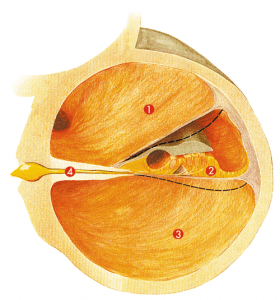Laws and Regulations
First of all, the term ’noise’ needs to be defined. Legislation describes it as ‘any type of sound that disturbs, bothers or damages the health of people, i.e. all sounds that compromise physical, mental and social well-being’. According to EU guidelines (2006) the following applies:- at 80dB or above – Hearing protection has to be provided.- at 85dB or above – Hearing protection must be worn.
Within Europe, all hearing protection products must conform to the appropriate CE standard. Custom Made Hearing Protection comes under the category PPE (Personal Protective Equipment) and must comply with the following standards:
- EN 352-2:2002: Hearing protection – Ear plugs
- EN 352-6:2002: Hearing protection with electrical audio input
The standards were completed in 2003 with new classifications:
- EN 13819-1: Individual Hearing Protection: Physical test methods
- EN 13819-2: Individual Hearing Protection: Acoustic test methods• The old 352-series is limited to the specific demands that are set by delivery conditions and guidelines
Positive – List of Infield Otoplastics

Description:HM = High / Medium frequency noise (LC-LA<5 dB),
HML verified according to EN 458L = Low frequency noise (LC-LA> 5 dB),
HML verified according to EN 458S = Audible signals in railway construction are discernible
V = Audible signals for vehicle drivers in road traffic conditions are discernible
W = Meets the criteria for ‘General warning signals’, ‘Informative noises’ and ‘Voice comprehension’
E = Audible signals for shunting and mainline railway locomotive drivers are discernible
* = The hearing protectors were tested and/or certified by the IFA institute.
Hearing - how does it work?
A very important factor in the hearing process is the frequency of sound. The unit of frequency is Hertz (Hz). Hertz is a measure of the number of sound waves per second. The amplification of sound by the Ossicles depends on the frequency. The best amplification of sound is achieved in the range of the human voice, between 1000 and 2000 Hz. When a sound wave reaches the Oval Window via the previously mentioned pathway, it is passed on via the Perilymph, inside the Scala vestibule, to trigger the Basilar Membrane. Depending on the frequency, sensory hairs in different locations on the Organ of Corti are triggered. An analogy would be waves breaking at specific points on the beach, depending on their size. This way we can distinguish between high and low pitches. From the Stereocilia the sound wave travels towards and resonates the Reissner’s membrane. The membrane experiences a deflection by the incoming wave to the sensory filaments.
This resonance then triggers receptor cells which send an electric impulse along the auditory nerve to the brain. Here the sound is recognised and defined. For example as a note or a word. The ear responds 7 times faster than the eye. If we could see as fast as we can hear, we would see every single frame in TV broadcasts instead of fluid movements.

Cochlea
1. Stirrup
2. Oval window
3. Helicotrema
4. Scala vestibule
5. Organ of Corti
6. Scala tympani
7. Round window
Diagram of the cochlea
1. Scala vestibule
2. Organ of Corti
3. Scala tympani
4. Auditory nerve


